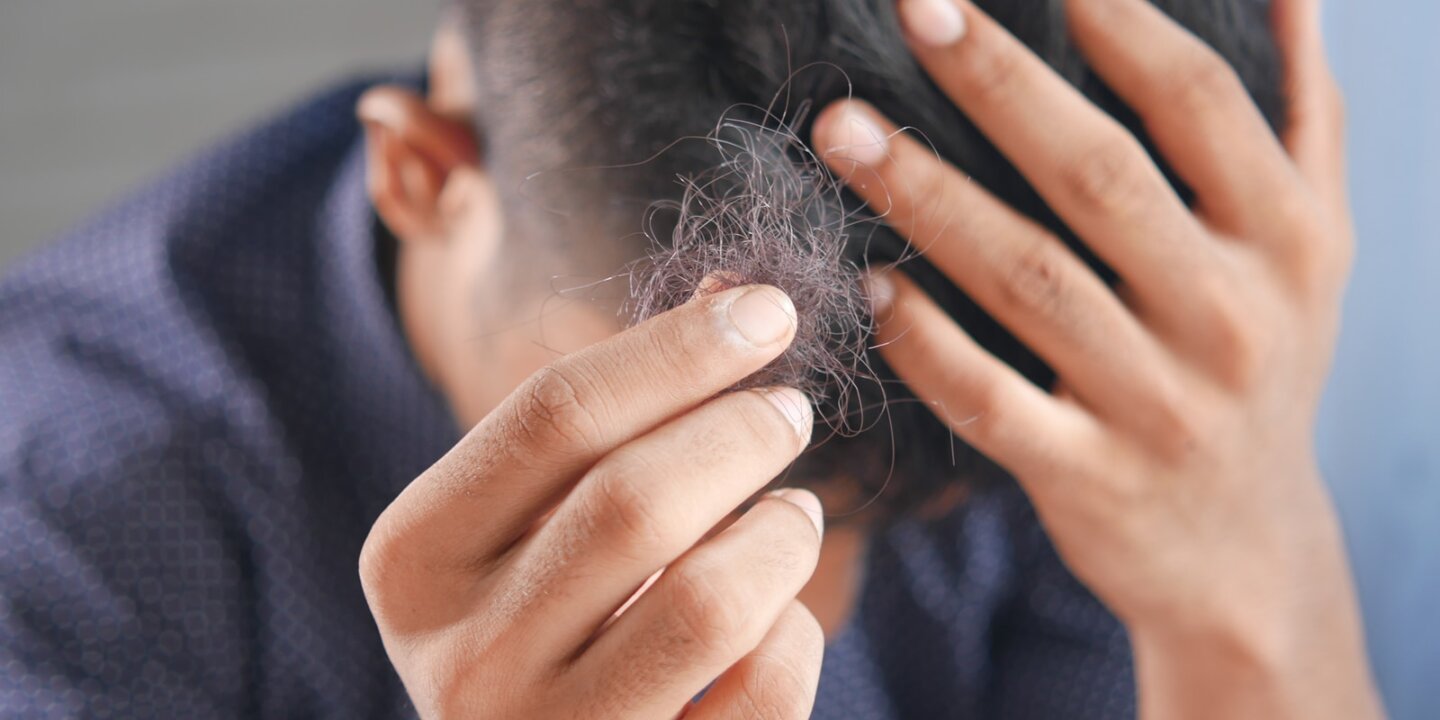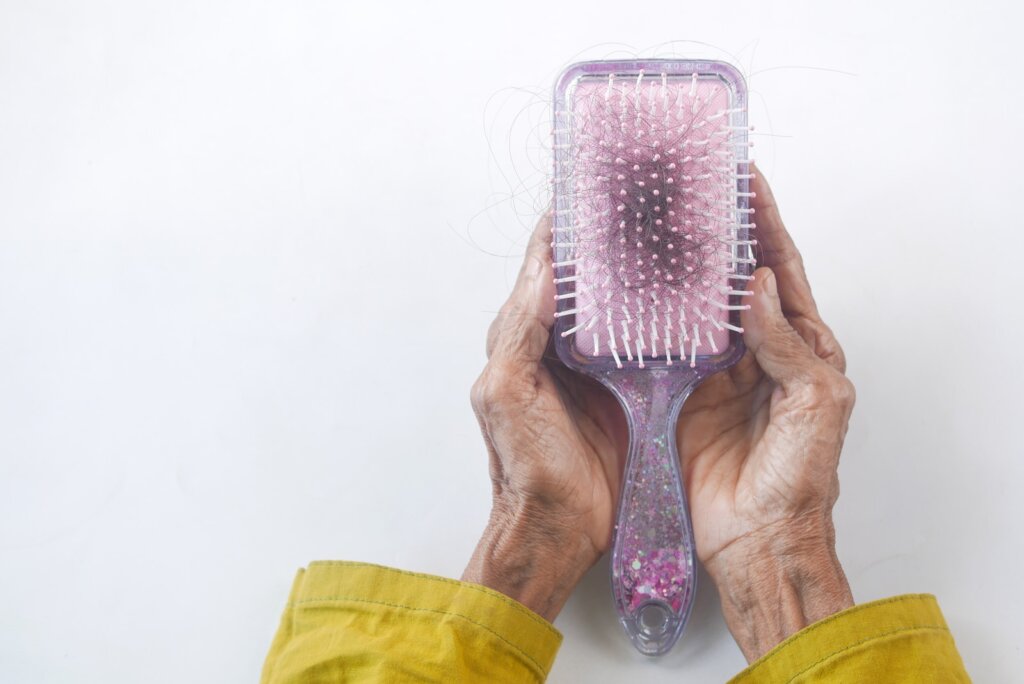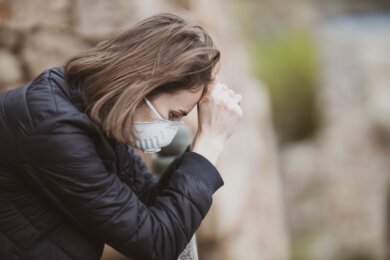
Hair loss-alopecia- can affect just your scalp or your whole body, and it can either be permanent or temporary. Anybody can suffer from alopecia, but it is most common in men; hair loss can result from hormonal changes, genetic, medical conditions, or just aging.
Being one form of hair loss, baldness refers to extreme hair loss from your scalp. Genetic hair loss with age is the most common cause of baldness. Some people may choose one of the modern treatments available to restore hair growth.
It is advisable that before pursuing any hair loss treatment, consult your doctor about the cause of your hair loss and treatment options.
CAUSES OF HAIR LOSS
Typically, we lose 50 to 100 hairs daily. This usually is unnoticeable because new hair is growing at the same time. And hair loss occurs when new hair doesn’t replace the hair that has fallen out.
Hair loss is usually related to one or two of the following factors:
Hormonal changes and medical conditions
Various conditions can cause temporary or permanent hair loss; this includes hormonal changes due to menopause, birth control pills, pregnancy, giving birth, and thyroid conditions. Medical conditions include alopecia areata, which is immune system-related and causes sparse hair loss, scalp infections such as ringworm, and trichotillomania-hair pulling disorder.
Hereditary
This is the most common cause of hair loss, and it mostly happens with aging. This condition is androgenic alopecia, male pattern baldness, and female pattern baldness. This usually occurs gradually and in predictable patterns- a disappearing hairline and bald spots in men and thinning hair along with the crown of the scalp of women.
Medications and supplements
Hair loss can be a side effect of certain medications such as those drugs used for depression, gout, cancer, arthritis, high blood pressure, and heart complications.
Toxic substances
This includes chemotherapy, radiation therapy, and medications with high levels of vitamin A. This causes hair loss anywhere in your body and can lead to permanent hair loss if your follicles are destroyed.

Hairstyles and treatments
Extreme hairstyling that pulls your hair tight, such as Ghanaians, can cause a type of hair loss called traction alopecia. And if the hair follicles are damaged, hair loss can be permanent. For treatments such as hot-oil hair treatments and permanents can alos lead to hair fall. And in any case, scarring occurs, hair loss could be permanent.
Stress or shock
Excessive physical stress to your body causes temporary hair loss. This includes sudden weight loss, illness, anemia, and surgery.
Existing Modern Hair Loss Solutions
Currently, there are a few treatment options to halt or reverse hair loss. Most hair loss treatments only manage hair loss instead of a permanent solution.
There are only two drugs that have been approved by the US Food and Drug Administration ( FDA) to treat hair loss. These drugs are Finasteride ( Propecia) and Minoxidil (Rogaine).
Minoxidil
Minoxidil use for pattern baldness was discovered by accident. Minoxidil was initially used to treat high blood pressure, but researchers found that the drug’s side effect was hair growth in unexpected areas.
Minoxidil cream is applied on the scalp and may work by increasing blood flow on the affected area and thus nourishing the hair follicles.
The treatment does not affect the hormonal process of hair loss, and its benefits are temporary, meaning that hair loss continues if you stop using the drug.
Finasteride
Finasteride side effects on hair growth were encountered during the development of a drug to treat enlarged prostate glands.
Finasteride inhibits an enzyme responsible for converting testosterone into the more potent androgen DHT; this enzyme is known as type II 5 alpha-reductase. DHT levels are reported to be reduced by atleast 60%
when the drug is taken, which in turn prevents the susceptible follicles from being affected by the hormone and returning their average size.
The effects are temporary; hair loss continues if usage is discontinued. This treatment does not work on women.
Low-level laser therapy
Low-level laser therapy (LLLT) is a form of light treatment that has been shown to stimulate hair growth in both men and women. Researchers theorize that the main mechanisms of epidermal stem cells in the follicle and shifting the follicle back into the growth phase of the cycle.
Hair transplantation
This involves harvesting follicles from the back of the head that are DHT resistant and transplanting them to bald areas.
A surgeon will remove minuscule skin plugs containing few hairs and implant them where the follicles are inactive. 15% of hairs emerge from the follicles as a single hair, and 15% grow in groups of five hairs.
At the end of the process, you will still have the same amount of hair; it will be evenly distributed around the scalp. This treatment can be painful and costly. There is also a risk of infection and scarring.























